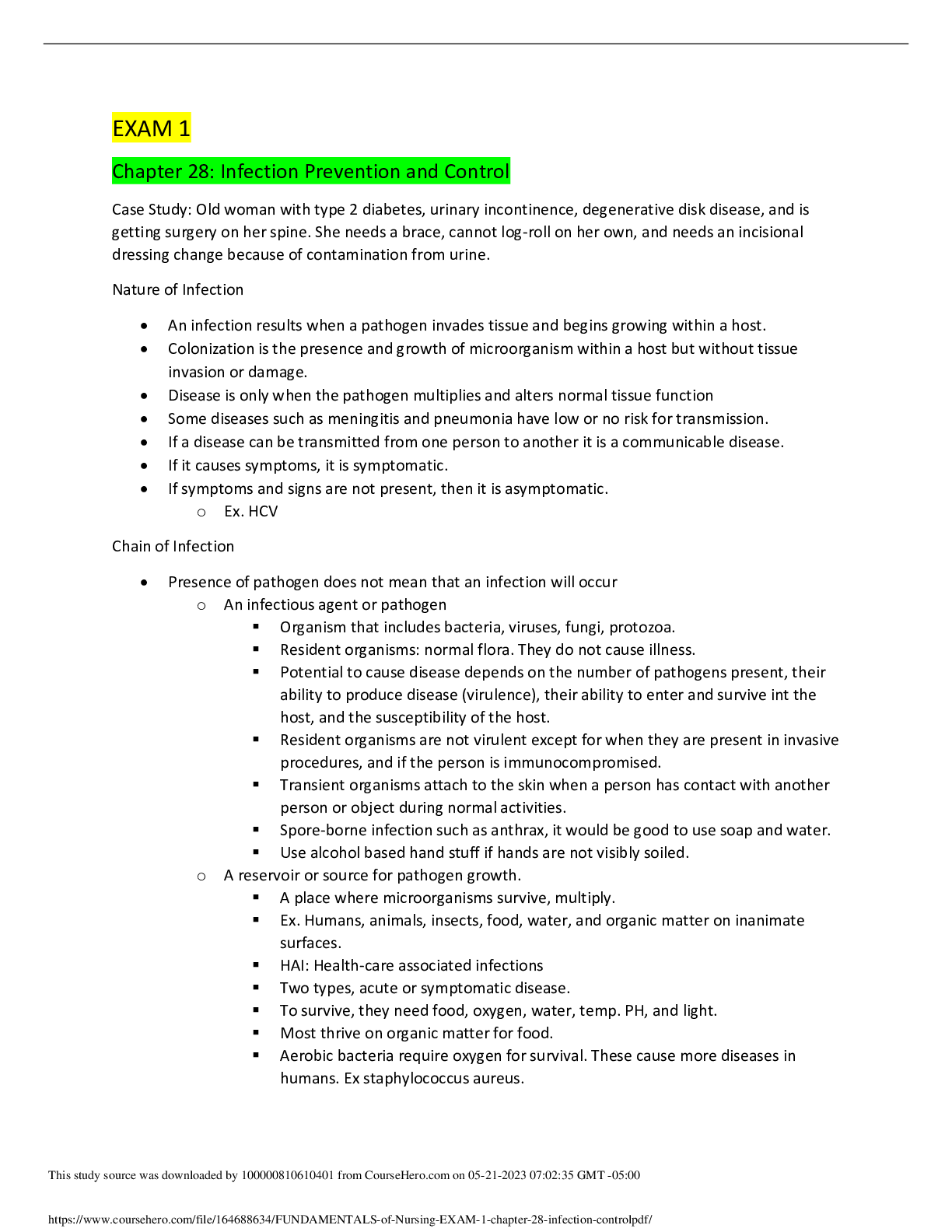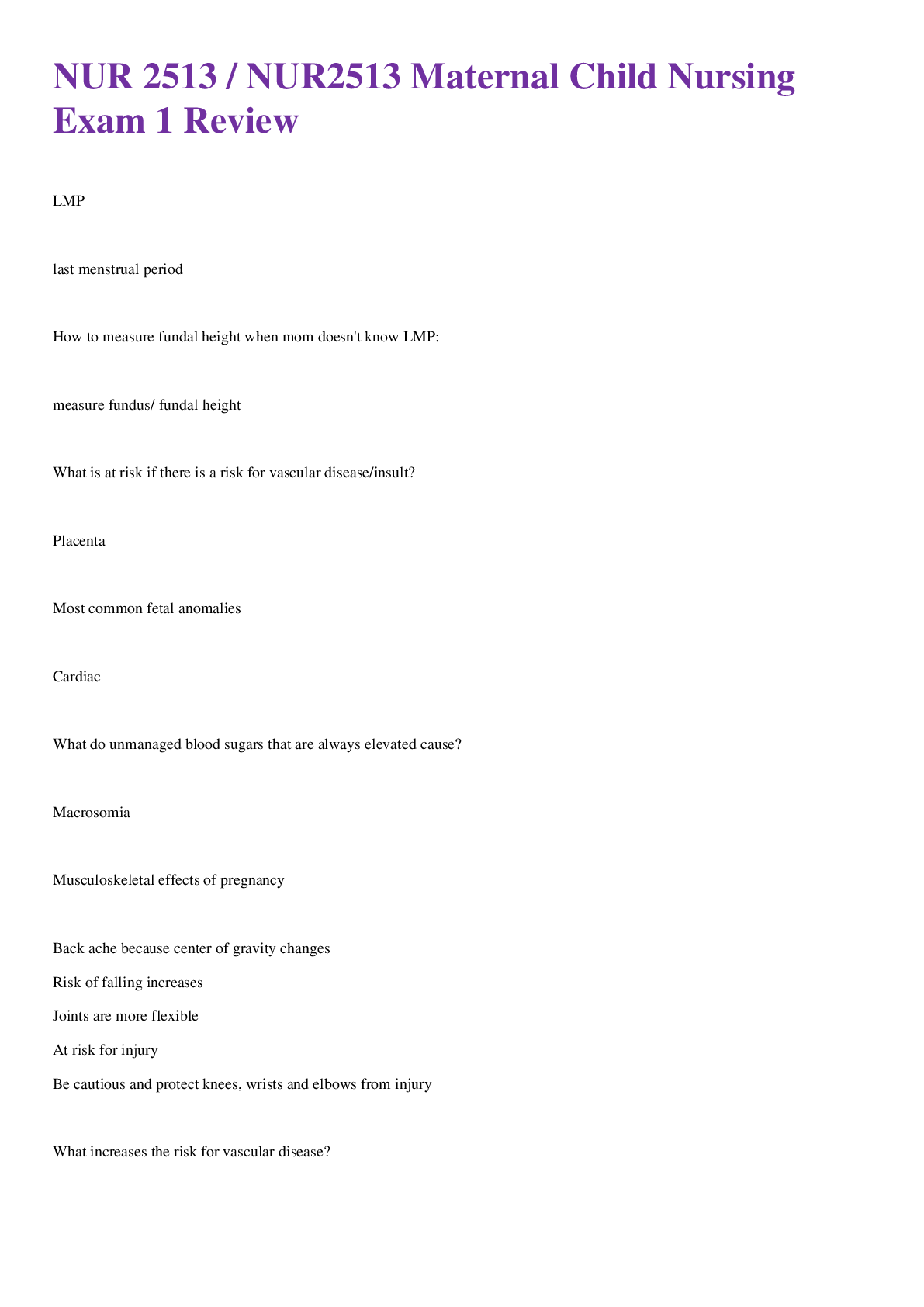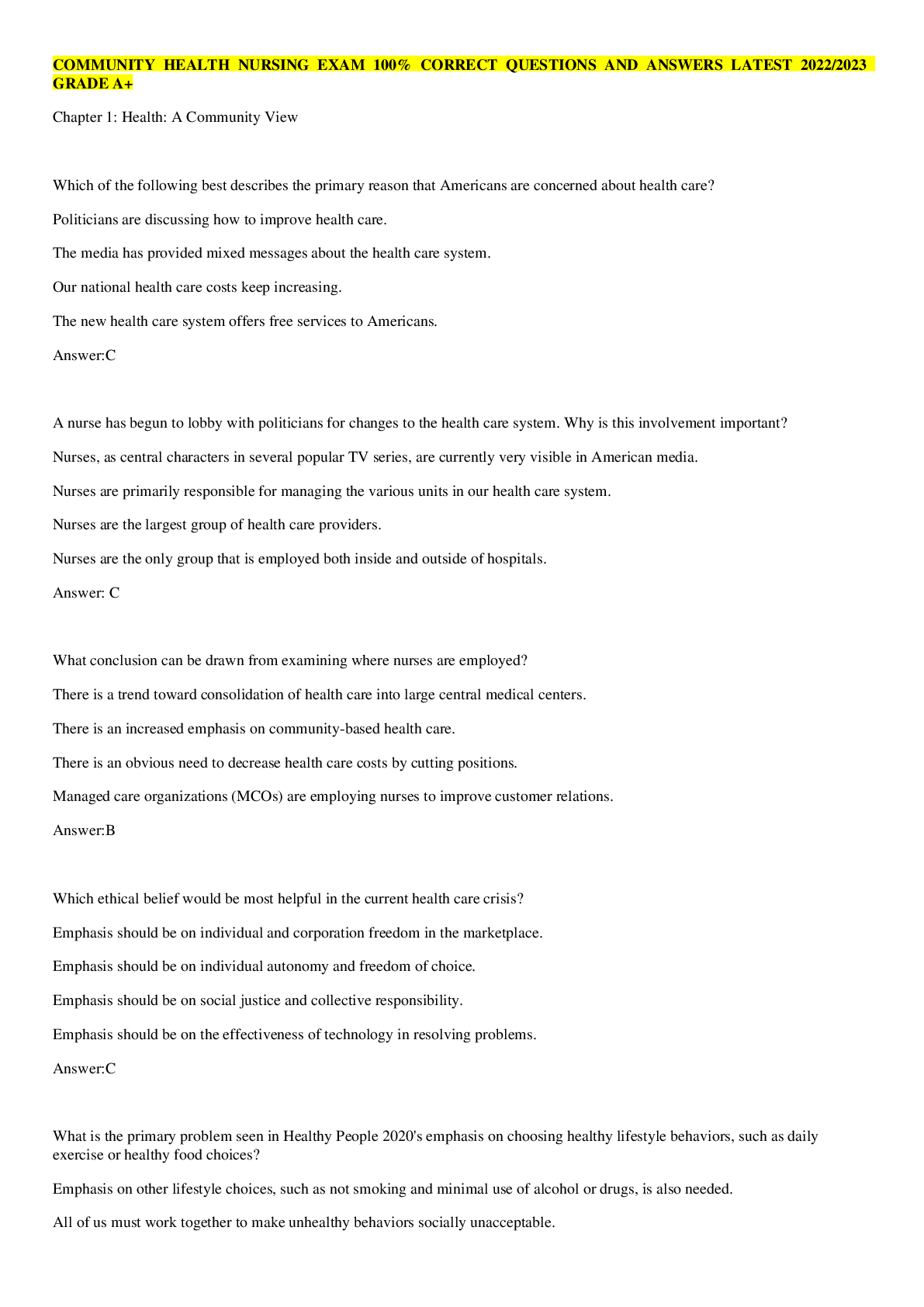NUR 205 > EXAM REVIEW > Fundamentals of Nursing Exam 1_ Infection prevention and control (All)
Fundamentals of Nursing Exam 1_ Infection prevention and control
Document Content and Description Below
Case Study: Old woman with type 2 diabetes, urinary incontinence, degenerative disk disease, and is getting surgery on her spine. She needs a brace, cannot log-roll on her own, and needs an incisiona... l dressing change because of contamination from urine. Nature of Infection • An infection results when a pathogen invades tissue and begins growing within a host. • Colonization is the presence and growth of microorganism within a host but without tissue invasion or damage. • Disease is only when the pathogen multiplies and alters normal tissue function • Some diseases such as meningitis and pneumonia have low or no risk for transmission. • If a disease can be transmitted from one person to another it is a communicable disease. • If it causes symptoms, it is symptomatic. • If symptoms and signs are not present, then it is asymptomatic. o Ex. HCV Chain of Infection • Presence of pathogen does not mean that an infection will occur o An infectious agent or pathogen ▪ Organism that includes bacteria, viruses, fungi, protozoa. ▪ Resident organisms: normal flora. They do not cause illness. ▪ Potential to cause disease depends on the number of pathogens present, their ability to produce disease (virulence), their ability to enter and survive int the host, and the susceptibility of the host. ▪ Resident organisms are not virulent except for when they are present in invasive procedures, and if the person is immunocompromised. ▪ Transient organisms attach to the skin when a person has contact with another person or object during normal activities. ▪ Spore-borne infection such as anthrax, it would be good to use soap and water. ▪ Use alcohol based hand stuff if hands are not visibly soiled. o A reservoir or source for pathogen growth. ▪ A place where microorganisms survive, multiply. ▪ Ex. Humans, animals, insects, food, water, and organic matter on inanimate surfaces. ▪ HAI: Health-care associated infections ▪ Two types, acute or symptomatic disease. ▪ To survive, they need food, oxygen, water, temp. PH, and light. ▪ Most thrive on organic matter for food. ▪ Aerobic bacteria require oxygen for survival. These cause more diseases in humans. Ex staphylococcus aureus. [Show More]
Last updated: 2 years ago
Preview 1 out of 6 pages

Buy this document to get the full access instantly
Instant Download Access after purchase
Buy NowInstant download
We Accept:

Also available in bundle (1)

Bundle for Fundamentals of Nursing Exams 1
Fundamentals of Nursing Exam Bundle | Guranteed success| Questions & Answers
By blackpanther 2 years ago
$40
7
Reviews( 0 )
$6.00
Can't find what you want? Try our AI powered Search
Document information
Connected school, study & course
About the document
Uploaded On
May 21, 2023
Number of pages
6
Written in
Additional information
This document has been written for:
Uploaded
May 21, 2023
Downloads
0
Views
81













